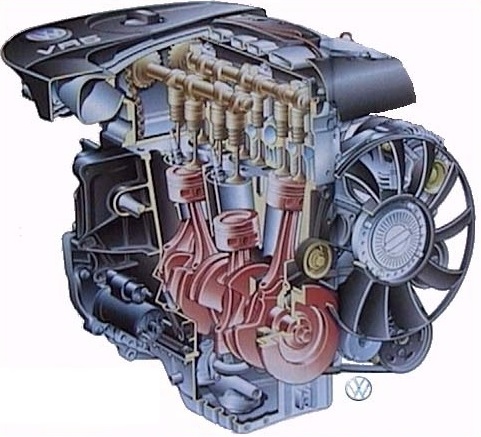
What engine is the 5 cylinder V engine: 5 V cylinder consists of two cylinder banks, one bank containing three cylinders and the other containing two. In a transverse layout the three cylinder bank is located towards the front and in a longitudinal layout towards the right. Due to the narrow angle the cylinder arrangement appears like a staggered inline five cylinder and the narrow angle allows also to use single cylinder head.
What is the 5 cylinder V engine displacement: it is 2324 cc in recent model line up powertrain.
How much is the power of the 5 cylinders V engine displacement: the power of the 5 cylinders is in a range from 150bhp to 170 bhp
Which cars use 5 cylinder V engine: the 5 cylinders V, called VR5 is an engine developed by the Volkswagen Group and produced from 1997 to 2006. It was derived from the VR6 engine by VW, but with one less cylinder. VR5 engines are narrow-angle V5 petrol engines, with a V angle of 15 degrees and a displacement of 2,324 cc (2.3 L; 141.8 cu in). The VR5 was the first production block to use five cylinders in a V design with a 15-degree angle.
Due to the use of a single cylinder head, a key design principle of the VR engines, exhaust and intake ports were of unequal length between the two cylinder banks. To mitigate this, Volkswagen used unequally sized valves to ensure even flow and power output from the cylinders.

This engine made by VW used a cast iron cylinder block with five staggered cylinders. Each cylinder was 81.0 mm × 90.2 mm (3.19 in × 3.55 in) bore x stroke, resulting in 464.8 cc (28.4 cu in) per cylinder with a 0.90:1 stroke ratio (undersquare/long stroke). The top of each piston was angled to accommodate for the use of the 15 degrees narrow V angle.
The 5 cylinder V -VR5- engine have a firing order of 1-2-4-5-3.
Source: https://en.wikipedia.org/wiki/VR5_engine
edited by arrabbiata